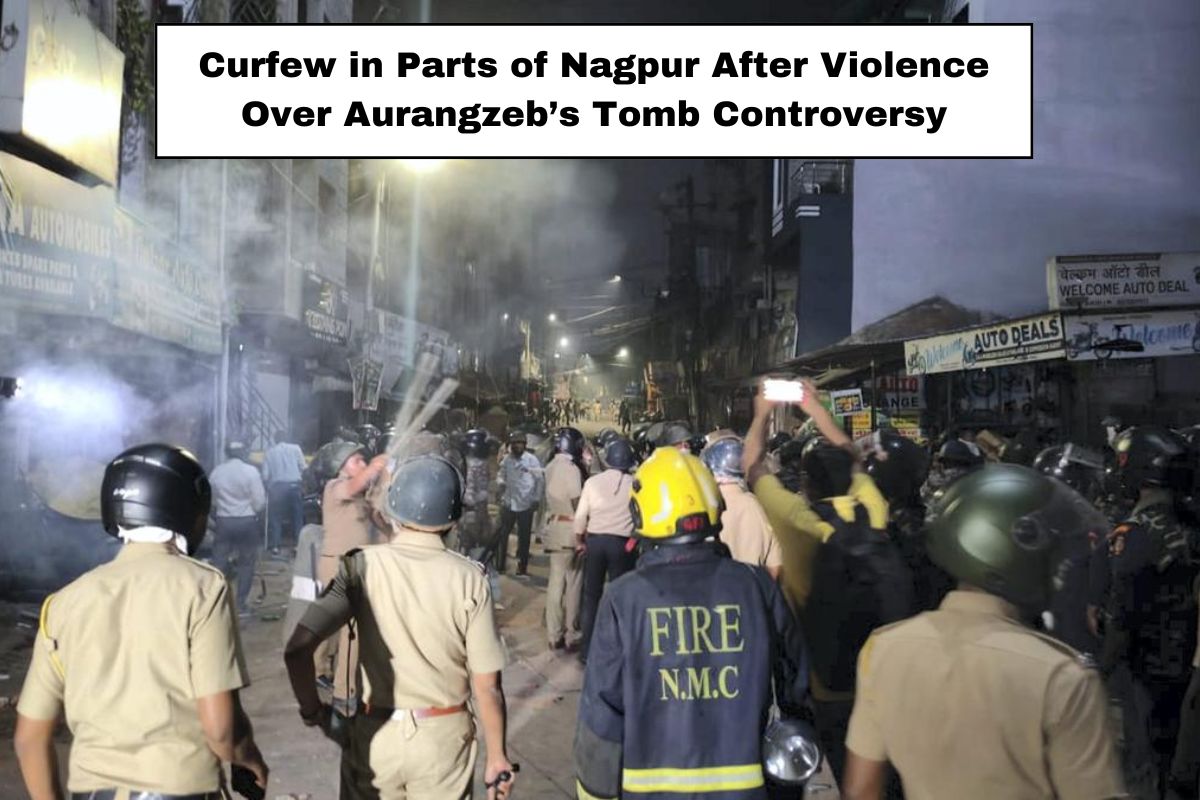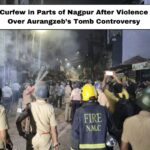Table of Contents
Introduction
A curfew has been imposed in multiple regions of Nagpur following violent clashes that erupted over calls to relocate the tomb of Mughal emperor Aurangzeb from Maharashtra. This unrest has raised concerns about communal harmony and public safety.
Background of the Conflict
The dispute centers around Aurangzeb’s tomb, located in Chhatrapati Sambhajinagar (formerly Aurangabad). The demand to remove the tomb sparked protests and led to a severe law-and-order situation in Nagpur.
Areas Under Curfew
Nagpur Police Commissioner Ravinder Kumar Singal has enforced Section 163 of the Bhartiya Nagarik Suraksha Sanhita, applying curfew restrictions in:
- Kotwali
- Ganeshpeth
- Tehsil
- Lakadganj
- Pachpaoli
- Shantinagar
- Sakkardara
- Nandanvan
- Imamwada
- Yashodharanagar
- Kapilnagar
These restrictions will remain in effect until further notice to prevent further disturbances.
Protests and Escalation
Members of the Vishwa Hindu Parishad and Bajrang Dal organized a protest at Nagpur’s Mahal area near a statue of Shivaji Maharaj, advocating for the removal of Aurangzeb’s tomb. Demonstrators burned a symbolic grave covered in green cloth, an act that triggered rumors and escalated tensions.
Violence and Police Response
The situation intensified when a group of around 80-100 individuals reportedly became violent, leading to:
- Stone pelting at law enforcement officials.
- Vehicles being set on fire.
- Injuries to both civilians and police officers.
Authorities resorted to baton charges and tear gas to disperse the crowd, bringing the situation under control. Reports indicate that more than a dozen police personnel were injured, while four civilians also sustained injuries.
Government’s Stand and Appeal for Peace
Union Minister and Nagpur MP Nitin Gadkari has urged citizens to remain calm and avoid spreading misinformation. He assured that the government will take appropriate action against those responsible for unlawful activities.
Chief Minister Devendra Fadnavis has also emphasized the importance of maintaining law and order, stating:
- Nagpur has a history of communal harmony.
- Residents should refrain from believing or spreading rumors.
- Strict action will be taken against those inciting violence.
Arrests and Security Measures
Authorities have detained at least 50 individuals linked to the violent clashes. A significant police force has been deployed in affected areas to ensure public safety and prevent further unrest.
Political Reactions
Opposition Criticism
The opposition has criticized the state government for its handling of the situation:
Shiv Sena (UBT) leader Aaditya Thackeray: Claimed that Maharashtra’s law and order situation has deteriorated under the current administration.
NCP MP Supriya Sule: Urged citizens to uphold the progressive values of Maharashtra and maintain social harmony.
Congress leader Pawan Khera: Accused the ruling party of using historical events to create division and unrest.
Conclusion
The curfew in Nagpur serves as a crucial step to restore peace and prevent further violence. While political and social tensions remain high, authorities continue to emphasize the need for law and order. The situation highlights the ongoing challenges of communal harmony and historical sensitivities in India.
FAQs
- Why was a curfew imposed in Nagpur?
A curfew was enforced following violent clashes over the demand to relocate Aurangzeb’s tomb.
- How many people were injured in the clashes?
Reports indicate that several police officers and civilians sustained injuries during the violence.
- Which areas are affected by the curfew?
Kotwali, Ganeshpeth, Tehsil, Lakadganj, Pachpaoli, and several other areas are under curfew.
- What triggered the violence?
The situation escalated after protesters burned a symbolic representation of Aurangzeb’s tomb, leading to widespread unrest.
- What actions are being taken against those responsible?
Authorities have detained at least 50 individuals, and further investigations are underway.










